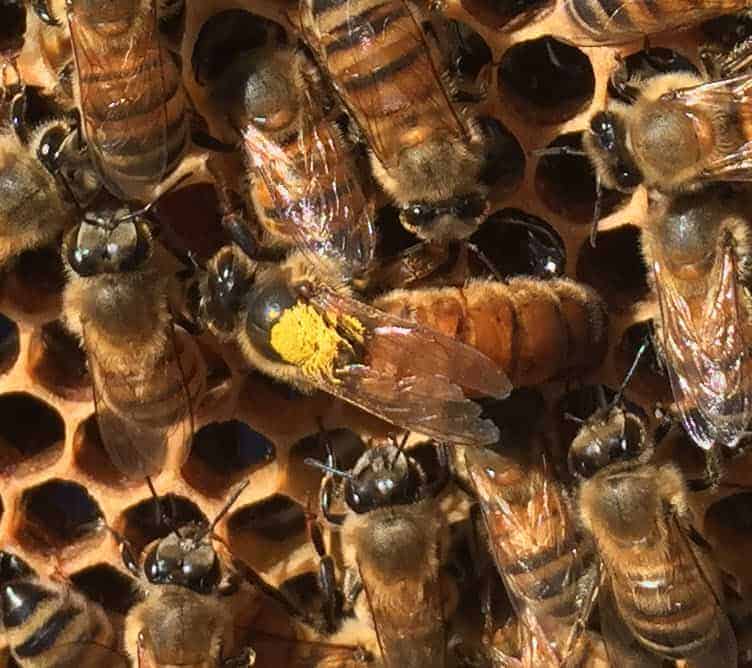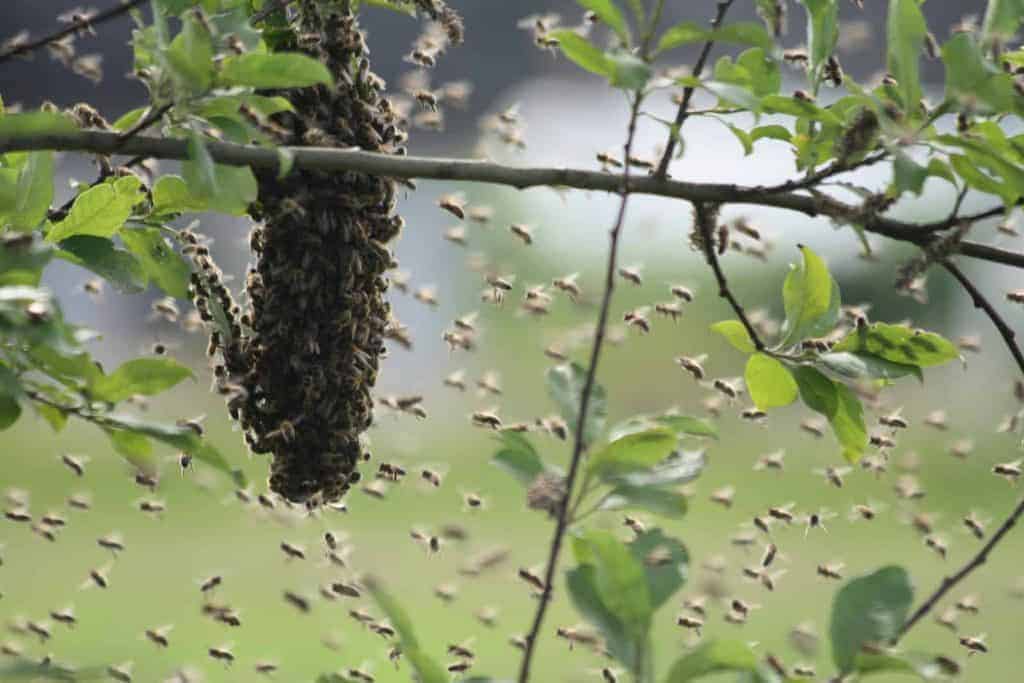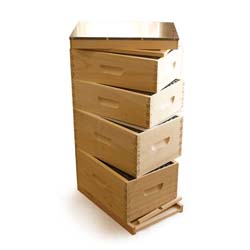Reproduction of individual bees helps to ensure there are enough workers being born to maintain the jobs needed to support the colony. Then, if the colony does outgrow its current hive conditions or available resources, colonies will use “swarming” to reproduce at the colony level.
At the individual bee level…
The honeybee queen is the only bee in a beehive that can lay fertilized eggs, which is her main role. For a virgin queen to have fertilized eggs available, she must first mate with a male drone honeybee. The act of mating is typically completed mid-air and causes death to the drone. A single virgin queen may mate with many drones on her mating flights, helping to ensure the diversity of genetics in future generations.
During mating, the drone bee deposits sperm into the queen’s special holding organ called a spermatheca, allowing her to lay fertilized eggs for the remainder of her life. Eggs are laid in the cells of frames within the brood nest. The size of each cell will tell the queen whether the egg laid in it should be fertilized to become a worker or must remain unfertilized to become a drone. Within those brood cells, each bee will go through all 4 stages of development (egg, larva, pupa, then adult), no matter what type of bee they are.

At the colony level…
Swarming is the way that the reproduction of a honeybee colony happens at a larger level. When honeybees feel that they are becoming too large for their current hive conditions (or they feel that conditions are otherwise unfavorable), the colony decides to swarm and the original queen and roughly half of the bees’ colonies will leave to establish their colony elsewhere. When a colony is preparing to swarm, workers will start to raise several new queens ahead of time by feeding them royal jelly. The first queen that emerges after the swarm leaves will then kill off any others that are born. The queen that survives will be the new colony’s queen and start the reproductive process to complete mating flights and start laying eggs all over again.

Honeybees must have successful reproduction at both the individual bee level and by splitting colonies to ensure long-term survival and genetic diversity within honeybee populations. Though an individual honeybee may only live for a few weeks, the colony itself is designed to thrive for years by continually producing new workers, drones, and even queens when necessary.
Read More
Mechanics of the Drone Congregation Area
How Drones Benefit a Honeybee Colony
The Role of the Drone Honeybee *
* Colony Member-Only Content
